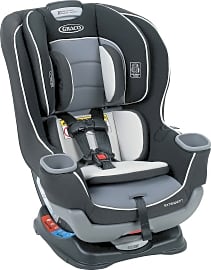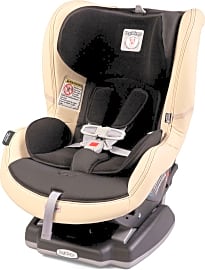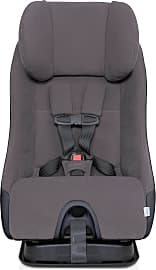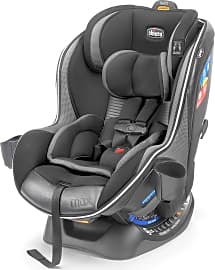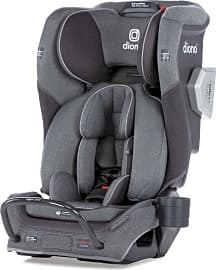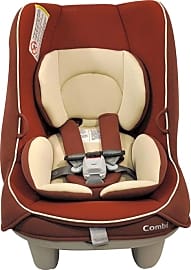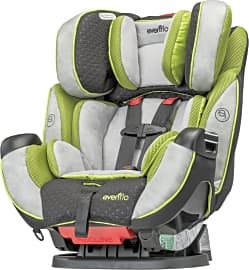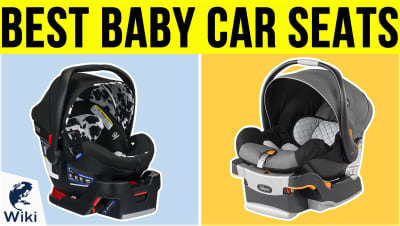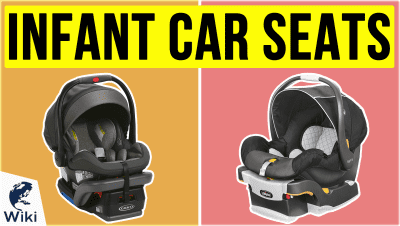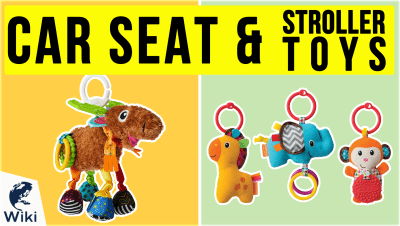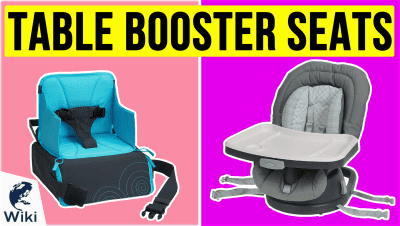The 10 Best Convertible Car Seats

This wiki has been updated 39 times since it was first published in March of 2015. These versatile, all-in-one car seats are designed to adapt as children grow, since they can be situated in both rear- and forward-facing positions. They can save you the time and money associated with buying multiple models, as they can be used from birth through toddlerhood, and often even longer. Here we’ve ranked them based on safety ratings, price, and ease of installation and use. When users buy our independently chosen editorial recommendations, we may earn commissions to help fund the Wiki.
Editor's Notes
October 03, 2020:
In today’s update, we replaced a couple of older, outdated models with new ones that incorporate additional features for comfort and safety. We replaced the Britax Marathon ClickTight with the Britax Advocate ClickTight, since the latter provides more layers of side impact protection. It hits all the marks for safety, with a rugged steel frame and an impact-absorbing base. It’s also relatively easy to install, which helps minimize the chances of user error. Simply lift up the panel, thread the lap and shoulder belts through the provided slots, and close it back up. As its name implies, it locks with a satisfying click, so you know you’ve done it correctly. We also added the Graco Extend2Fit to replace the Graco Size4Me, since the Extend2Fit is better designed for longer-term rear-facing. It’s got a pull-out footrest to provide five inches of additional legroom for kids who are facing the rear. It’s comparatively inexpensive and is a good value for the price, with a height that’s easy to adjust and straps that are a cinch to tighten. It’s a good choice for anyone who frequently uses ride sharing or switches between cars, since it’s compatible with either a seat belt or your car’s LATCH system.
The newly added Chicco NextFit Zip Max replaces the older Chicco NexFit Matrix. The Zip Max will keep your child comfortable, thanks to its breathable mesh backrest, and the fabric is easy to remove to be placed in the washer. It’s also made with safety in mind, with a steel-reinforced frame, and directions printed right on the side so you won’t necessarily need to look for the manual when moving it or making adjustments. A complaint from some users on this one, however, is that it’s on the bulky side, so be sure to read the specifications and make sure it will work well in your vehicle ahead of time. We also added the Diono Radian 3QXT in today’s update, and this versatile model offers four modes that can accommodate kids from birth up to 10 years of age. It’s been updated with enhanced features, and has been tested to twice the recommended impact force, as well as rear-impact and rollover tested. It replaces the Disney Baby Apt 50, which is unavailable at this time.
On a safety-related note, when using any car seat, be sure it’s installed correctly and that your child fits within the age and weight guidelines provided by the manufacturer. Make sure the harness is fastened properly whenever it’s in use. As a rule, infants and children should not be left unattended in car seats, whether they are awake or asleep. While baby gear can be expensive, never use a second-hand car seat since it’s possible it has been involved in an accident that might render it unsafe to use.
May 03, 2019:
There are two very important things to consider when choosing a kids car seat, in this order: how effective they are in the terrible event of a crash and how easy they are for parents to actually use them. With that in mind, we looked for advanced safety features like those in the Peg Perego Primo Viaggio. Its steel back plate won't flex upon impact and its base intentionally crumples in a crash to minimize force on the rider. The Clek Fllo has a steel anti-rebound bar to add extra peace of mind, should a child jut forward even in the slightest. Meanwhile, the Combi Coccoro boasts foam that will absorb the majority of the force in an accident, keeping it away from the precious neck and spine of the rider. The perk of a convertible car seat is that it should be so customizable, you don't need to purchase a second one any time soon. The Chicco NexFit Matrix has six headrest settings, dual chest clip positions, and bubble indicators that confirm the proper angle setting. The Maxi-Cosi Magellan Max should comfortably hold babies as small as five pounds up to children roughly 10 years old, handling car safety for a long time. Meanwhile, the Britax Marathon ClickTight has a 14-position harness, making it easy to get a comfortable fit on your little one as he or she grows.
Why Should I Buy A Convertible Car Seat?
Traditionally, infant car seats have been preferred for very new babies because they provide a measure of padding to keep your baby secure and cozy.
We're committed to helping you make well-informed choices and avoid unnecessary expenditure, so we've set out for you the pros and cons of buying a convertible car seat right away, versus using an infant car seat for the first 6-12 months.
Safety: There's no question that tiny babies have different requirements than bigger toddlers: their little spines and skulls are still growing and they're not yet able to support their own heads. This means they have to be able to lie flat in the car seat, so you'll need a seat that will allow them to do that. Infant car seats are designed to do this, but most convertible car seats now do too.
Another key safety issue is your little one's direction of travel: the American Academy of Pediatrics recommends that babies be kept rear-facing in the car until the age of 2, and this is the law in many US states. If your child outgrows their infant car seat before that age - which they are likely to do - then you're going to need to upgrade to a convertible seat in any case. Don't forget you need to bear in mind the seat's maximum height as well as the maximum weight allowance.
When it comes to protection in case of impact, the latest tests for Consumer Reports show convertible car seats outperforming infant seats in their ability to protect a child's head.
Comfort: Traditionally, infant car seats have been preferred for very new babies because they provide a measure of padding to keep your baby secure and cozy. These days, as you'll have seen from the products reviewed above, a lot of convertible car seats come with a removable 'infant insert' designed to do just that (although if your baby is especially tiny you might still find these seats a little too big at first).
Convenience: This is one big advantage that infant car seats have over convertible models: they can be lifted out of the car and carried into the house. Some models even fit right onto the stroller. But before you make a purchasing decision based on this, there are two things you need to remember:
Your baby is going to get heavy! Sure, swinging the car seat right out of the car and carrying it around seems like a great idea at first, but as your baby grows this is going to become less and less practical.
Multitasking your car seat may not always be safe. Some parents like to put the car seat on top of a shopping cart, but the manufacturers of both car seats and shopping carts advise you not to do this, as it can easily cause the cart to topple over, risking injury to your child. Meanwhile, even leaving your child in her car seat in your home is not as good an idea as it might seem: a study published in the Journal of Pediatrics last year found that this may not be safe.
Price: There's no contest here: buying one car seat is definitely going to be less expensive than buying two! We think you can get all the advantages of an infant car seat from a convertible seat if you choose carefully: check out the next article for our advice on how to do just that.
Convertible Car Seats: The Essentials, The Desirables, And Winning Details
Think of buying a car seat like hiring somebody for a job. It's one of the most important jobs in the world: that of helping to keep your baby safe. So you definitely know what you don't want. A second-hand car seat? That's like a resumé printed in Comic Sans - straight in the trash.
But once you've filtered out the definite 'no's, there are still a lot of candidates out there. To help you pick one, we've put together a sort of job description for the ideal convertible car seat: starting with the essential qualifications, then the desirable qualities, and finally a list of little winning details. Keep an eye out for these and they could just help you spot the car seat of your dreams.
Essentials
It's not possible to protect against every little eventuality, but for your own peace of mind you'll probably want to get the best side-impact protection you can afford.
- LATCH (Lower Anchors & Tethers for CHildren) - and maybe a decent seat belt alternative. LATCH is a set of straps by which you can attach your car seat directly to anchors built into the car, instead of having to wrap the seat belt around the car seat. All car seats have been compatible with this since 2002, so you should be golden - unless you're in an older vehicle, in which case you may not be able to use LATCH. Check your vehicle's specifications and if it isn't LATCH-able, make sure you buy a car seat that attaches via the seat belt with minimal fuss.
- A 5-point safety harness. Almost all modern convertible car seats come with this sort of harness, which is made up of a strap for each shoulder, a strap for each thigh, and a fifth strap between your baby's legs. Only with a 5-point harness can you ensure that the car seat is properly adjusted to your child's shape and therefore keeping him or her completely secure.
- A harness that is easily adjustable from the front, so you don't have to take the seat out of the car every time when the straps no longer fit your growing child.
- An infant insert. If you're going to be using this car seat for your newborn, this padding is essential so that he or she can fit snugly inside and still have room when they get bigger.
Desirables
- A machine-washable, removable cover! We toyed with filing this under 'essentials' but it's not strictly necessary...it's just going to make your life about a billion times easier once that car seat is all smeared with PB&J.
- A decent NHTSA 'Ease of use' rating: the National Highway Traffic Safety Administration rates car seats on how easy they are to install and use correctly.
- Side-impact protection. The amount of protection offered from side impact varies a lot between models. It's not possible to protect against every little eventuality, but for your own peace of mind you'll probably want to get the best side-impact protection you can afford.
Winning details
- A cup-holder! It sounds frivolous, but if your kid wants juice, you're going to want somewhere to put juice. Somewhere that is not 'all over your kid'.
- A lightweight seat. The biggest downside of convertible car seats versus infant car seats is their bulk and weight: opting for a seat made of lighter material could save you some heartache (and arm-ache) when you inevitably have to shift the seat around.
- An affordable seat. If you find a seat that checks all the boxes above - and it suits the size of your child and of your car - don't spend any more than you have to.
A Brief History Of Child Car Seats
The 19th century saw the earliest manufacture of cars, but it wasn't until the 1930s that the first child car seats appeared - and even then, they weren't really intended to keep children safe: just keep them still and in view of the driving parent.
Some 1940s models hooked on to the front passenger seat so Baby could keep the driver company - and even had a little steering wheel fitted so he or she could join in with driving, much like Maggie Simpson.
In 1962, two models of child safety seats were developed at around the same time: in Britain, a rear-facing seat with a three-point strap was created by the inventor Jean Ames; while Leonard Rivkin in the US designed the front-facing, metal-framed Strolee National Safety Car Seat for Children.
In the late 1960s, car manufacturers began to develop their own child safety seats: first Ford's Tot-Guard, which was developed in 1967, but it took a number of years to become available to the public; then the Loveseat, produced by General Motors.
The first federal safety standard for child car seating was adopted in 1971, although to this day the law regarding the use of child car seats varies by state.


